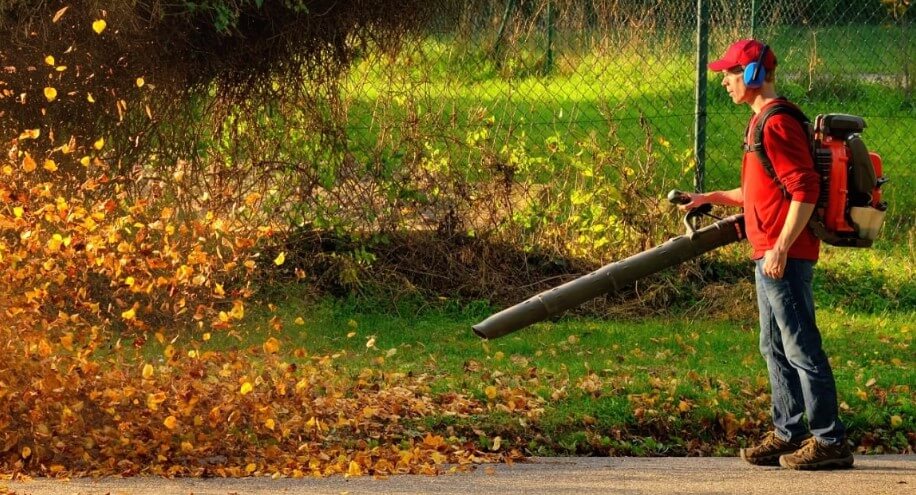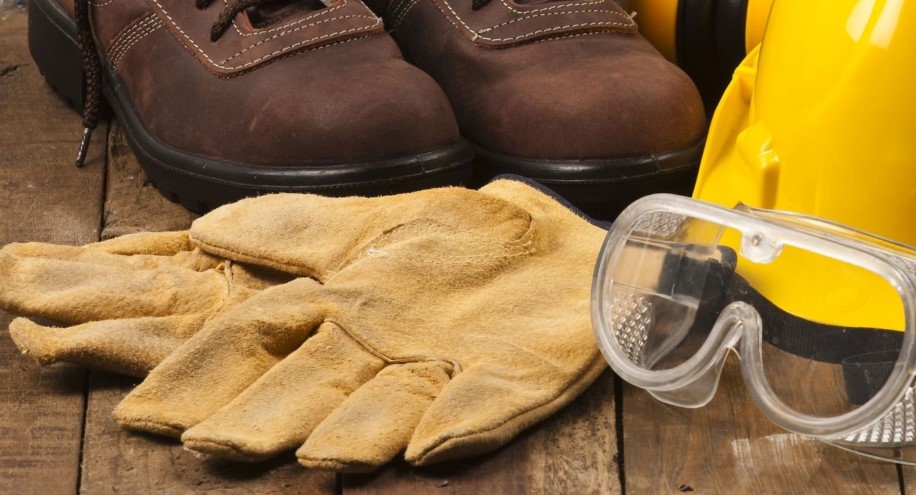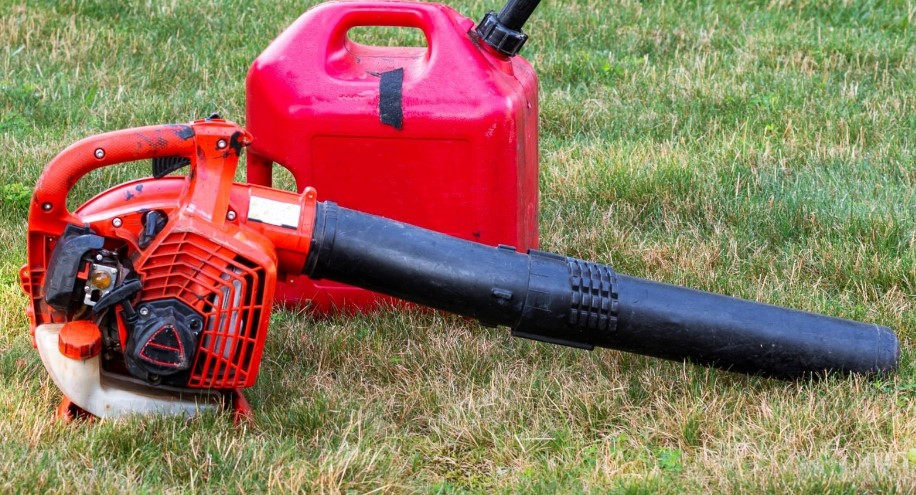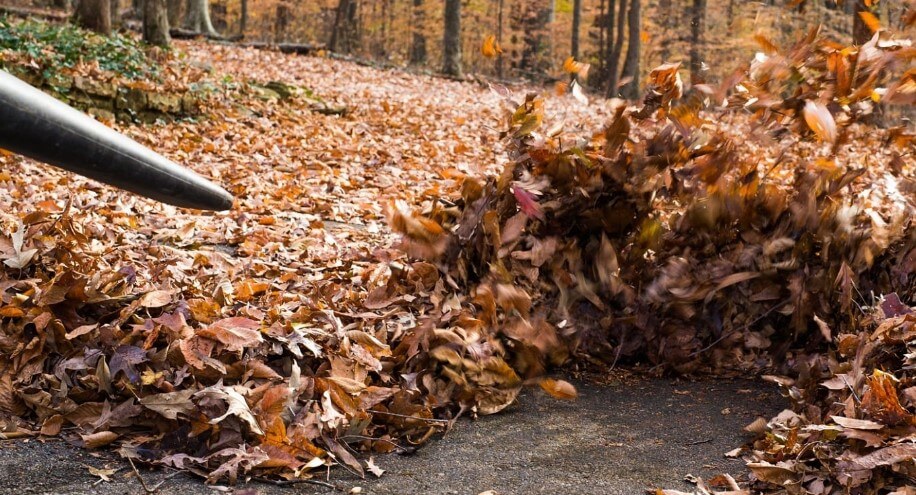How to Use a Leaf Blower Like an Expert
A leaf blower is a tool that can help you clear your yard of leaves, grass clippings, and other debris. It works by blowing air out of a nozzle, creating a powerful stream that can move unwanted materials. In this guide, we will show you how to use a leaf blower safely and effectively.
Whether you’re a beginner looking to master the basics or a seasoned leaf blower user seeking to level up your game, this guide has something for everyone. From safety tips to selecting the right settings and from creative leaf disposal ideas to maximizing the blower’s efficiency, we’ve got you covered.
The Factors to Consider When Choosing The Right Leaf Blower
Leaf blowers serve as highly useful tools, specifically designed to clear leaves, grass clippings, and various forms of debris, providing an immaculate appearance for your lawn or garden. However, not all leaf blowers are the same. There are different types, sizes, and features to consider before buying one. Here are some factors to help you choose the right leaf blower for your needs.
- Power source: Leaf blowers can run on electricity, gas, or batteries. Electric leaf blowers are usually lighter, quieter, and cheaper than gas ones, but they require an extension cord and a nearby outlet. Gas leaf blowers are more powerful and portable, but they emit fumes and noise and require regular maintenance. Battery-powered leaf blowers are cordless and eco-friendly, but they have limited run time and may lose power over time.
- Airspeed and volume: Leaf blowers are rated by how fast and how much air they can blow. The unit of measurement for airspeed is miles per hour (mph), and air volume is measured in cubic feet per minute (cfm). Higher air speed and volume mean more blowing power, but also more noise and vibration. You should choose a leaf blower that has enough power to handle your tasks but not more than you need

- Weight and comfort: Leaf blowers can vary in weight from a few pounds to over 20 pounds. The weight of the leaf blower affects how easy it is to carry and maneuver. You should look for a leaf blower that is comfortable to hold and has a balanced design. Some leaf blowers have ergonomic handles, padded straps, or anti-vibration features to reduce fatigue and strain.
- Noise level: Leaf blowers can be very loud, especially gas ones. Leaf blower noise is measured in decibels (dB). The higher the dB, the louder the noise. Some leaf blowers have noise-reducing features, such as mufflers or variable speed settings. You should also check the noise regulations in your area before buying a leaf blower, as some places have limits on how loud they can be.
- Additional features: Some leaf blowers have extra features that make them more versatile or convenient. For example, some leaf blowers can also vacuum or mulch the debris, saving you time and effort. Some leaf blowers have adjustable nozzles or tubes that let you control the direction and shape of the air stream. Some leaf blowers have detachable batteries or interchangeable attachments that let you use them for other purposes.
How to Use a Leaf Blower: Tips and Tricks
1. Weather Check
It is of paramount importance to take into consideration the prevailing weather conditions prior to commencing the operation of your leaf blower. Furthermore, it is advisable to refrain from employing the device on leaves that are damp or saturated due to precipitation, be it rain or snowfall, as doing so would yield results contrary to the desired outcome.
Additionally, it is prudent to abstain from the use of the leaf blower during instances of blustery conditions or when the wind is aligned in the same trajectory. It is recommended to await a climate characterized by dryness and tranquility to ensure the attainment of the most favorable results.
2. Safety Gear
Prioritize your safety by wearing appropriate protective gear. This includes eye protection, gardening gloves, a face mask or covering, protective clothing, closed-toe shoes, and noise-canceling ear muffs. Despite their seemingly harmless appearance, leaf blowers are powerful tools that can cause injury from flying debris. Furthermore, they produce high noise levels, which may damage your hearing with prolonged use.

3. Prepare Your Leaf Blower
In the case of cordless leaf blowers, it is imperative to ascertain that the battery is either fully charged or that an additional battery is readily available. For gas-powered leaf blowers, it is advised to ensure the fuel tank is adequately filled and to perform an oil examination before initiating the assigned task.
4. Clear the Outdoor Area
Make your leaf-blowing task easier by clearing the outdoor space first. Remove any large branches, debris, or lawn ornaments that might obstruct your path. If necessary, relocate garden furniture to avoid blowing leaves around them.
5. Adjust Power Settings
Before directing the blower at the leaves, adjust the airflow to an appropriate setting. Too much power can create a scattered mess, so it’s better to blow leaves into smaller piles instead of blowing them all over the yard. Consider using the ‘vacuum mode’ for smaller spaces or hard-to-reach areas beneath hedges.

6. Follow a Leaf Blowing Technique
You can adopt an effective leaf-blowing technique by starting from the outer perimeter of your backyard and directing the leaves toward the center. When using the blower, holding it by your side and pointing the front chute at a low angle toward the ground is necessary. Make sure to aim the airflow under the leaves rather than on top of them. As you walk, move the blower chute from left to right in a slow, arc-like motion, effectively gathering the leaves towards the center.
7. Direct Leaves onto a Tarp
For easy leaf collection, blow the leaves directly onto a large tarp. Once all the leaves are piled on the tarp, gather up the corners and tie them together. This method allows for convenient disposal or use as compost in the garden, and it’s a common practice among professional landscapers.
What to Do with Leaf Piles
Fall is a beautiful season, but it also brings a lot of leaves to your yard. What can you do with all those leaf piles? Here are some ideas:
Mulch
Leaves can be effectively utilized as mulch for garden beds, lawns, or trees. Mulch helps retain moisture, prevent weeds, and enrich the soil. Just shred the leaves with a mower or a shredder and spread them evenly over the area. You can also mix them with grass clippings or straws for extra benefits.

Compost
You can turn leaves into compost, which is a natural fertilizer for your plants. Compost also improves soil structure and drainage. To make compost, you need to layer leaves with other organic materials, such as manure, kitchen scraps, or coffee grounds. You also need to add water and air to the pile by turning it occasionally. It may take several months for the compost to be ready, depending on the conditions.
Fall Decoration Filler
You can use leaves to fill up containers, such as baskets, pots, or buckets, and create a festive fall display. You can add other elements, such as pine cones, pumpkins, or corn stalks, to make it more colorful and attractive. You can place the containers on your porch, patio, or doorstep for a welcoming touch.

Disposal
If you have too many leaves to use for any of the above purposes, you can dispose of them in a responsible way. You can check with your local municipality if they offer leaf collection or drop-off services. You can also contact a local recycling center or a landscaping company that may accept leaves for a fee. You should avoid burning leaves, as it can cause air pollution and health problems.
FAQs
Here are four frequently asked questions about how to use a leaf blower:
How do I choose the right leaf blower for my needs?
There are different types of leaf blowers, such as corded, cordless, gas-powered, backpack, and handheld. The best one for you depends on the size of your yard, the amount of leaves you need to clear, and your personal preferences. Some factors to consider are power, weight, noise level, battery life, and ease of use.
How do I operate a leaf blower safely and efficiently?
Prior to operating a leaf blower, it is crucial to wear suitable protective gear, such as gloves, goggles, earplugs, and a dust mask. Also, check the weather conditions and avoid using a leaf blower in strong winds or when the leaves are wet. To operate a leaf blower, hold it firmly with both hands and point the nozzle away from yourself and others. Move the leaf blower in a sweeping motion from side to side and blow the leaves into piles or onto a tarp. Do not blow the leaves onto the street, sidewalks, or other people’s property.

How do I maintain a leaf blower and extend its lifespan?
To keep your leaf blower in good condition, you should follow the manufacturer’s instructions for cleaning and storing it. Generally, you should remove any debris from the air filter, spark plug, and fuel tank after each use. It is necessary to lubricate the moving parts and conduct a thorough inspection for any indications of damage or wear. If you have a gas-powered leaf blower, you should use fresh fuel and add a stabilizer to prevent corrosion. If you have a cordless leaf blower, you should charge the battery fully before storing it.
How do I dispose of the leaves after using a leaf blower?
There are several ways to dispose of the leaves after using a leaf blower. You can compost them in your backyard or use them as mulch for your garden beds. You can also bag them and put them in your trash bin or take them to a recycling center. Some municipalities may offer curbside pickup or drop-off services for yard waste. Check with your local authorities for the best option in your area.
Conclusion
After reading this article, How to Use a Leaf Blower Like an Expert, you have now learned how to use a leaf blower like an expert, making yard cleanup a breeze. By following the strategies and tips outlined in this guide, you can achieve efficient and effective results while ensuring your safety and the well-being of your garden. You should remember to check the weather conditions before using your leaf blower to ensure optimal performance. It is really necessary to avoid blowing wet or soaked leaves after rain or snowfall and pick a dry and calm day for your leaf-blowing tasks.
Related Articles